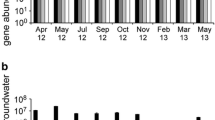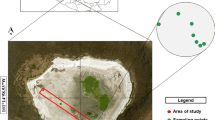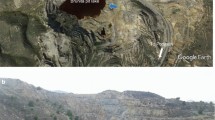Abstract
The influence of sediment properties and groundwater geochemistry on microbial abundance and activity was examined in a Gulf Coast aquifer system. Three boreholes were drilled into the sands, silts, clays, and lignite of the Eocene Yegua formation, and wells were installed in all water-bearing sands. Total numbers of microorganisms ranged from 106 to 108 cells g−1 dry weight (gdw−1), and viable counts ranged from 0 to 106 cells gdw−1. The highest densities of anaerobic heterotrophs and sulfate-reducing bacteria (SRB; 105 and 106 cells gdw−1, respectively) were measured in the deepest aquifer sands (28–31 m), even though the total organic carbon content was very low. Rates of anaerobic H2, lactate, and formate consumption were also high in aquifer sands, relative to the other strata. The higher microorganism numbers and activities in the aquifer sediments likely reflect the importance of increased electron donor and acceptor transport in higher hydraulic conductivity sands, relative to other strata. The presence of sulfate and near absence of other electron acceptors (O2, NO− 3, and Fe3+), absence of methanogens, high numbers of SRB, and relatively high sulfate reduction activity suggest that sulfate reduction is the dominant terminal electron-accepting process in the deep aquifer. In contrast to aerobic Atlantic Coastal Plain sediments, aquifer sediments at 30 m in this east-central Texas aquifer contain greater numbers of anaerobes than aerobes. Low pH and high sulfate contents argue for oxidation of pyrite in or near the shallow aquifer. This pyrite oxidation supplies sulfate to deeper aquifers. Pyrite from the deep aquifer sediments, with the greatest abundance and activity of SRB, is too enriched in 34S (up to 58‰) to have formed from modern or typical groundwater sulfate. Overall, our results suggest that the resident microbiota are capable of cycling carbon and sulfur in the aquifer, but probably without substantial remineralization of pyrite in the formation.
Similar content being viewed by others
Author information
Authors and Affiliations
Additional information
Received: 5 May 1997; Accepted: 5 August 1997
Rights and permissions
About this article
Cite this article
Martino, D., Grossman, E., Ulrich, G. et al. Microbial Abundance and Activity in a Low-Conductivity Aquifer System in East-Central Texas. Microb Ecol 35, 224–234 (1998). https://doi.org/10.1007/s002489900078
Issue Date:
DOI: https://doi.org/10.1007/s002489900078




